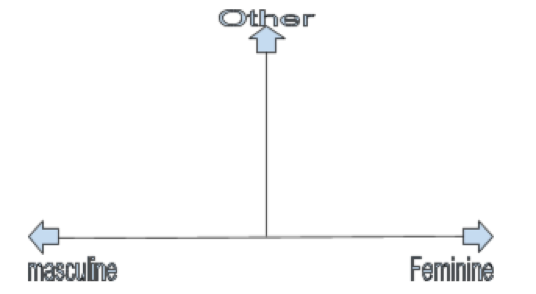Gender fluidity: The meaning and more
June 12, 2016

What does it mean to be gender fluid? To be gender fluid means that one’s gender can vary over time. However being gender fluid has nothing to do with the genitalia one has, or their sexual orientation but rather deals with the psychological state of the person at any given moment. It can be classified as a one-time variance or multiple variances over time. A person who is gender fluid might feel like a mix of the two traditional genders or might feel more masculine on some days and more feminine on other days. Gender fluid people might also identify as multi gender or non-binary.
Gender fluidity and types of gender are two completely different things. Since the concept of gender fluidity is new it may be hard to grasp the differences between gender fluidity with its different forms and the different types of gender that can occur within the categories of gender fluidity. There are many different types of gender fluidity such as Affectugender: one’s gender is affected by the fluctuations of one’s feelings, and Bigender: The person experiences two genders; one after the other or both at the same time. On the other hand, there are different types of gender that is associated with gender fluidity. For example, a Demiboy: Someone who is male-like or both male and genderless. Other types of gender exist as well, such as Aporagender: A non-binary gender identity and umbrella term for a gender separate from male, female and anything in between while still having a strong and specific gendered feeling.
This graph shown below is a fantastic representation of the different ways gender can take form. The more to the left you are, the more masculine, left, feminine, and along the Y-axis denotes any other gendered traits.
How can one approach a gender fluid person respectfully? This is one of the most over-looked questions that surround this field, and what is the answer?
The use of pronouns!
You might be asking yourself, well what is a pronoun? It is in essence, the way in which we refer to one another… him, her, it, them, and they…
Asking a gender fluid person their pronouns every time you meet them will surely brighten their day. Even if you are an expert on identifying all the different forms of gender fluidity and types of gender, learning to use new pronouns to refer to people can be one of the most difficult tasks to accomplish. This is most likely due to the fact that we are all being raised in a dichotomized society where male and female gender roles are seen as immovable concepts with no seeable grey area.
So why create an article on gender fluidity? Gender fluidity is such a new concept that almost no one in any sort of medical or psychological professional field acknowledges its existence. Until further research is conducted on this topic, gender fluidity will continue to be dismissed as unrealistic and not taken seriously through the general public’s eye.
